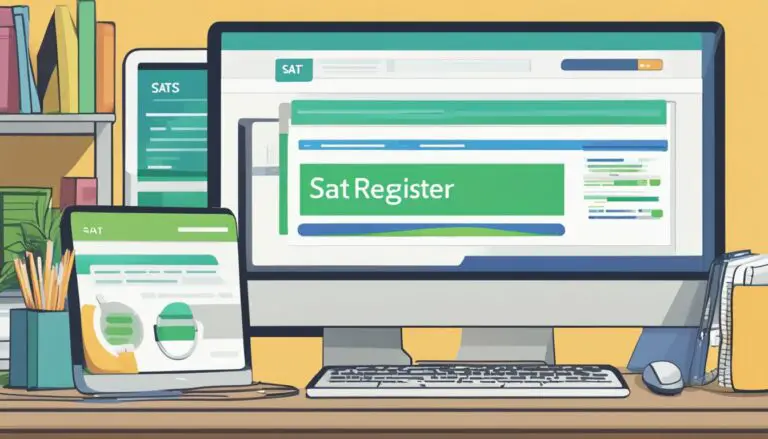LSAT Reading Comprehension: Tips and Strategies for Success
The Reading Comprehension section of the LSAT is designed to evaluate test-takers ability to analyze large amounts of material for content and understanding. This section always contains a total of four passages and a total of 26 to 28 questions.
The passages in LSAT Reading Comprehension can cover many topics, many of which may be unfamiliar to test-takers.
However, it is essential to note that having prior knowledge of the subject matter is unnecessary to answer the questions correctly. Instead, the test-taker should focus on understanding the main ideas and arguments presented in the passage.
To answer the questions in the LSAT Reading Comprehension section, test-takers should read the passage carefully and pay close attention to the details.
Some of the questions can be answered with information explicitly stated in the passage. In contrast, others require the test-taker to make inferences or draw conclusions based on the information presented.
It is essential to manage time effectively in the LSAT Reading Comprehension section, as each passage and its accompanying questions must be completed within a set time limit. Test-takers should aim to read the passage quickly but thoroughly and then answer the questions efficiently and accurately.
Types of Passages
The LSAT Reading Comprehension section includes four sets of reading questions, each consisting of a selection of reading material followed by five to eight questions. The reading selection in three sets consists of a single reading passage, while the other set contains two related shorter passages.
The LSAT Reading Comprehension section passages can cover various topics, including arts, humanities, science, and social science. The passages are typically taken from academic journals, magazines, and newspapers.
One type of passage that may appear on the LSAT is an arts or humanities passage. These passages can cover literature, history, philosophy, and the arts. They may focus on a particular work of art or literature, or they may examine broader cultural or historical trends.
Another type of passage that may appear on the LSAT is a science passage. These passages can cover biology, chemistry, physics, and earth science. They may focus on a particular scientific discovery or theory or examine broader scientific concepts or principles.
Social science passages may also appear on the LSAT. These passages can cover political science, sociology, psychology, and economics. They may focus on a particular social or political issue or examine broader social or economic trends.
🌟 Hey Students! 🚀 Ready for the ultimate experience? Join us on Studentsinside.com's Facebook, YouTube, WhatsApp, and LinkedIn. Click now for tips, fun, and success vibes! 🌈✨ #StudentLife #JoinUs
No matter what type of passage appears on the LSAT, it is essential to approach each passage with a neutral and analytical mindset. The test-taker should focus on understanding the passage’s main ideas and supporting details rather than bringing their opinions or biases into the analysis.
Reading and Interpreting Passages
The Reading Comprehension section of the LSAT measures a candidate’s ability to read, understand, and analyze complex passages. The passages are typically taken from various fields, including law, social sciences, humanities, and natural sciences. The passages can range from one to four paragraphs, and the subject matter can vary widely.
To succeed in the Reading Comprehension section, candidates must identify the main idea of each passage, understand the context in which it is presented, and analyze the content and subject matter. They must also recognize the author’s style and tone and understand the purpose of the passage.
One of the most essential skills in Reading Comprehension is the ability to read actively. This means reading with a purpose and actively engaging with the material. Candidates should read each passage carefully, taking note of keywords and phrases and underlining or highlighting important information. They should also consider the passage’s structure, including the introduction, body, and conclusion.
When answering questions about a passage, candidates should refer to the text to find evidence supporting their answers. They should also be able to distinguish between information explicitly stated in the passage and implied information.
Candidates should also be able to recognize the author’s purpose and point of view and identify any biases or assumptions that may be present in the text.
Question Types and Approaches
The LSAT Reading Comprehension section includes one graded section and is 35 minutes long. It consists of 4 passages, each with its own set of questions. There are typically 26-28 multiple-choice questions in total. One of the four passages may contain two shorter and related texts, a variation called Comparative Reading.
The LSAT Reading Comprehension section tests various question types, including Main Point, Inference, and Specific questions. Main Point questions ask the test-taker to identify the passage’s central idea or main argument.
Inference questions require the test-taker to draw conclusions based on the information presented in the passage. Specific questions ask for specific details or facts from the passage.
Two main approaches to tackling the LSAT Reading Comprehension section are reading the questions first, skimming the passage(s), and returning to the questions.
While both approaches have merits, reading the questions first may be the most effective under time conditions. This approach allows the test-taker to focus on the most critical information while reading the passage(s).
To succeed in the LSAT Reading Comprehension section, it is essential to understand the different question types and how to approach them. By practicing with LSAT practice tests and developing a solid strategy, test-takers can improve their scores and achieve success on test day.
The Role of Inferences
Inference questions are an essential part of LSAT Reading Comprehension. These questions ask the reader to draw conclusions based on the information presented in the passage. Inference questions can be challenging because they require the reader to make logical connections between different pieces of information.
One of the key skills tested in inference questions is the ability to identify the passage’s main point. The main point is the central argument or idea that the author is trying to convey. Inference questions often ask the reader to make inferences about the main point based on the information presented in the passage.
Inference questions can also require the reader to make inferences about new contexts. This means that the reader must be able to apply the information presented in the passage to a unique situation or scenario.
For example, if the passage discusses a scientific study, an inference question might ask the reader to infer how the results could be applied in a real-world context.
When answering inference questions, it is essential not to make assumptions or draw conclusions not supported by the information presented in the passage. Inference questions require the reader to use critical thinking skills to make logical connections between different pieces of information.
Understanding and Analyzing Arguments
The LSAT Reading Comprehension section evaluates the ability of the test-taker to quickly and thoroughly synthesize written material. One of the essential skills tested in this section is understanding and analyzing arguments presented in the passage.
To excel in LSAT Reading Comprehension, test-takers must be able to identify the author’s main argument, the supporting evidence, and the reasoning behind the argument. Understanding the author’s perspective and the purpose of the argument is crucial to answering the questions correctly.
Test-takers should look for the principles and analogies presented in the passage to analyze an argument. Recognizing another argument as structurally similar is an effective way of demonstrating an understanding of the argument presented in the passage.
It is also essential to analyze the reasoning behind the argument. Reasoning can be flawed; identifying flaws is a critical skill for LSAT Reading Comprehension. Test-takers should be able to identify the assumptions made in the argument, the evidence presented, and the conclusion drawn from the evidence.
Comparative Reading in LSAT
The LSAT Reading Comprehension section consists of four sets of reading questions, each containing a selection of reading material followed by five to eight questions. Three sets consist of a single reading passage, while the other sets have two related shorter passages.
One type of passage that may appear in the LSAT Reading Comprehension section is a comparative reading set. In this type of passage, two shorter readings are presented side by side, and the following questions require the test-taker to compare and contrast the two readings.
To tackle comparative reading passages effectively, it is essential first to understand the purpose of the comparison. The comparison may be used to highlight similarities or differences between the two readings, or it may be used to illustrate a point through contrasting perspectives.
To approach these passages, it is recommended that the test-taker read both passages in their entirety before attempting to answer any questions. This allows the test-taker to understand each passage and the purpose of the comparison fully.
When answering questions, paying attention to the specific details and arguments presented in each passage and any direct comparisons made between the two is essential.
Test-takers should also be aware of any rhetorical or stylistic devices used in the passages, as these may be used to emphasize specific points or perspectives.
Author’s Attitude and Tone
LSAT Reading Comprehension questions often ask test-takers to identify the author’s attitude or tone towards the subject of the passage. The author’s attitude refers to their feelings or opinions about the topic, while tone is how they are conveyed through the writing.
Identifying the author’s attitude and tone can be challenging, but it is essential for success in the LSAT Reading Comprehension section. One way to approach these questions is to look for specific language or phrases that indicate the author’s feelings or opinions. For example, words like “admire,” “condemn,” or “criticize” can provide clues to the author’s attitude.
Another strategy is to consider the overall tone of the passage. Is it formal or informal? Objective or subjective? Sarcastic or sincere? Paying attention to the tone can help identify the author’s attitude towards the subject.
It is important to note that the author’s attitude and tone are not always explicitly stated in the passage. In some cases, they may be implied through the author’s use of language, the structure of the passage, or the examples provided.
Strategies for Selecting Answer Choices
When it comes to LSAT Reading Comprehension, selecting the best answer choice can be a challenging task. However, several strategies can help test-takers improve their accuracy and speed.
One important strategy is always reading all the answer choices before selecting the best answer. This will help ensure the test-taker considers all available options and does not rush to choose the first seemingly correct answer.
Additionally, responding to the specific question and not picking an answer choice is essential simply because it is a true statement.
Another effective strategy is to evaluate the answer choices and select the choice that matches the test-taker’s prediction of the correct answer or eliminate the four wrong answer choices.
This can be done by identifying the keywords and phrases in the question and passage and using them to eliminate answer choices that do not align with the text.
It is also important to remember that the best answer choice is the one that most accurately answers the question being posed. Test-takers should avoid selecting an answer choice simply because it sounds good or because it is a true statement.
Dealing with New Information and Terms
LSAT Reading Comprehension passages often contain new information and terms that the reader may not be familiar with. It is essential to approach these passages with an open mind and a willingness to learn. Here are some strategies to help deal with new information and terms:
- Contextual Clues: Look for clues within the passage to help you understand new terms. For example, if a passage concerns a scientific concept, the author may provide definitions or explanations of key terms.
- Use Prior Knowledge: Use your prior knowledge to help you understand new information. For example, if a passage is about a historical event, you can use your knowledge of history to help you understand the passage.
- Make Inferences: Use the information provided in the passage to make inferences about new terms. For example, if a passage is about a new medical treatment, you can infer that the new treatment is likely to be effective based on the information provided in the passage.
- Look for Synonyms: Look for synonyms or similar terms to help you understand new terms. For example, if a passage uses the term “carnivore,” you can infer that it means an animal that eats meat.
- Re-read: If you come across a new term you don’t understand, re-read the sentence or passage to see if you can better understand the term.
Challenges and How to Overcome Them
LSAT Reading Comprehension can be a challenging section for many test-takers. The passages are dense, and the questions are designed to test your ability to comprehend and analyze the information presented. However, you can overcome these challenges and improve your score with the right approach.
One of the main challenges of LSAT Reading Comprehension is time management. The test-taker must read and understand the passage while answering questions within a limited time frame.
To overcome this challenge, it is essential to practice reading and answering questions quickly. The test-taker can also try to mentally segment each passage into smaller parts to make it easier to comprehend and remember.
Another challenge is staying focused and engaged while reading the passage. The passages can be dry and difficult to follow, making it easy to lose focus. To overcome this challenge, the test-taker can try to actively engage with the material by highlighting and annotating important information.
They can also try to visualize the information presented in the passage to make it more memorable.
Finally, LSAT Reading Comprehension questions can be challenging and require critical thinking skills. To overcome this challenge, the test-taker can practice identifying the different question types and developing strategies for answering them. They can also practice analyzing the information presented in the passage to understand the author’s argument and perspective.
Practice and Application
Practice is key to improving LSAT reading comprehension skills. Consistent practice with official LSAT practice tests and other materials can help test-takers become familiar with the format and structure of the exam, as well as develop strategies for answering questions efficiently and accurately.
One effective way to practice LSAT Reading Comprehension is to read various texts, including scientific articles, literary passages, and social science essays. This can help test-takers become comfortable with different writing styles and subject matter, which can be helpful on test day.
Another critical aspect of practice is application. Test-takers should try to apply the strategies and techniques they have learned to actual LSAT Reading Comprehension passages. This can help them identify areas where they may need to improve and refine their approach.
Memory can also play a role in LSAT Reading Comprehension success. Test-takers should aim to retain key information from each passage they read, as this can help them answer questions more accurately and efficiently. One way to improve memory is to take brief notes while reading, highlighting key details and main ideas.
Finally, it is essential to remember that specific rules and guidelines govern LSAT Reading Comprehension. Becoming familiar with these rules can help test-takers approach each passage with a clear understanding of what is expected of them.
Some important rules to remember include reading each passage carefully, focusing on main ideas and supporting details, and avoiding making assumptions or drawing conclusions not supported by the text.








